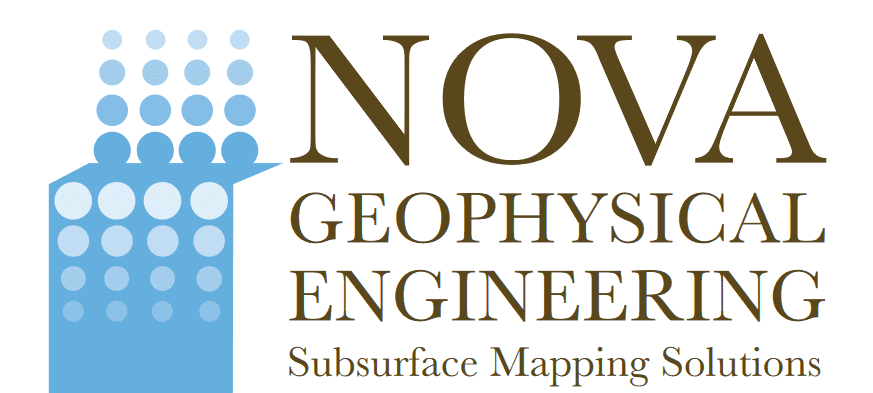Ensuring Efficiency With State-of-the-Art Innovations
Underground utilities can pose a variety of setbacks for construction and facilities management if their locations and depths are not accurately known. Drawings and maps of these are commonly inaccurate or, in many cases, not documented at all.
Geophysical surveys are a rapid and cost-effective means to map underground utilities in either a pre-construction or design phase. NOVA offers a variety of geophysical technologies for the location of underground utilities and various other applications. These include:
- Borehole
- Electrical Resistivity Imaging (ERI)
- Ground Penetrating Radar (GPR)
- Electromagnetic (EM) Survey
- Comprehensive Subsurface Utility Location (CSUL)
- Microgravity Surveying
- Microseismic Monitoring
- Seismic Refraction Surveying
- Time Domain Electromagnetic Surveying (TDEM)
- Concrete & Structural Imaging
Electrical Resistivity Imaging (ERI)
The electrical resistivity imaging (ERI) method maps subtle differences in the electrical properties of geologic materials that may be caused by variations in lithology, pore-water chemistry, water content, and the presence of buried debris. ERI involves transmitting an electric current into the ground between two electrodes and measuring the voltage between two other electrodes.
The direct measurement is an apparent resistivity of the area underneath the electrodes that includes deeper layers as the electrode spacing is increased. The spacing of electrodes can be increased about a central point, resulting in a vertical electric sounding (VES) that is modeled to create a 1-D geoelectric cross section.
Recent technological advances allow for rapid collection of adjacent multiple soundings along a transect that are modeled to create a 2-D geoelectric cross-section. The cross section is good for mapping both the vertical and horizontal fluctuations in the subsurface.
ERI can be used in mapping stratigraphy and aquifer boundary units, such as aquitards, bedrock, faults, and fractures. This is useful for:
- Delineation of voids in karstic regions
- Mapping saltwater intrusion into coastal aquifers
- Delineation of contaminated groundwater
- Detecting leaks in dams
- Mapping zones of mineralization as well as sand and gravel resources
- Mapping subsurface conditions of pavements, retaining walls, or geologic foundations
- Electrode array lengths are tens to hundreds of meters.
- Most are successful in long areas free of buried utilities and severe topography.
- Depth of penetration is approximately one-fourth to one-eighth the array length.
- Vertical and horizontal resolution decreases with depth and varies with array type.
- Fast, noninvasive, and inexpensive compared to drilling
- Less susceptible to interference from overhead utility lines and other obstacles compared to electromagnetic methods such as TDEM and CSAMT
- Easily referenced to existing boreholes and allows for interpreted cross-section between boreholes
- Optimizes the location of water supply wells
- Guides placement of geotechnical borings and monitoring wells
